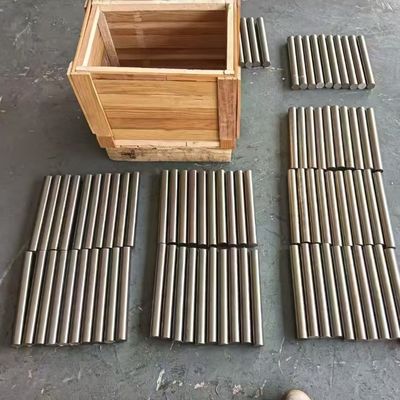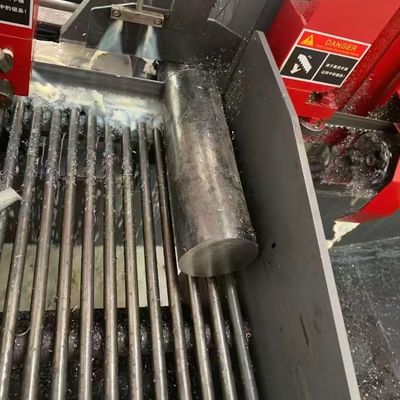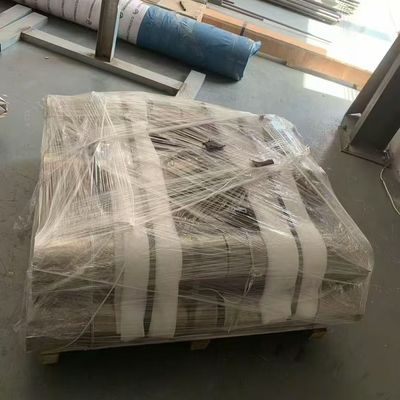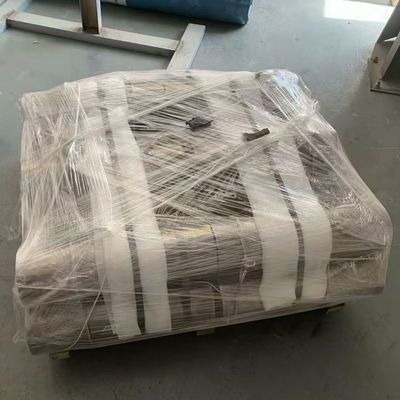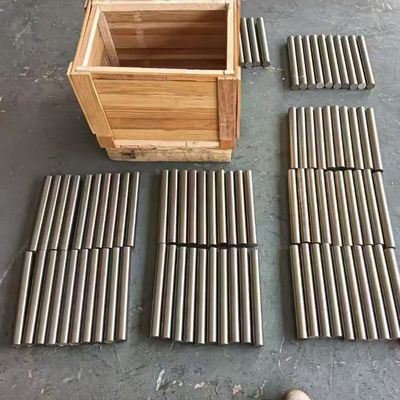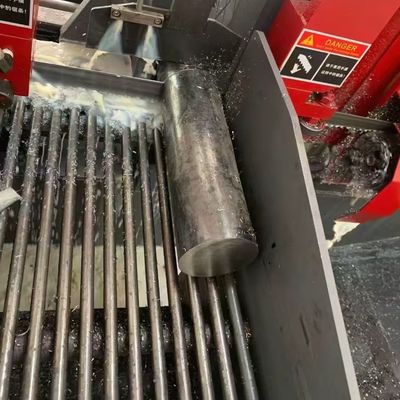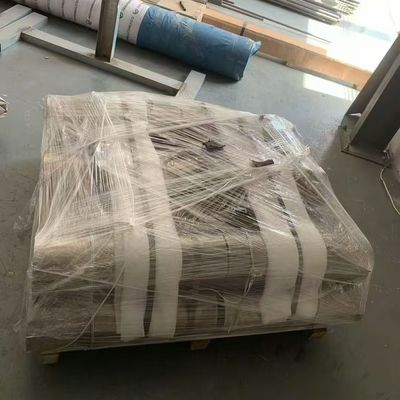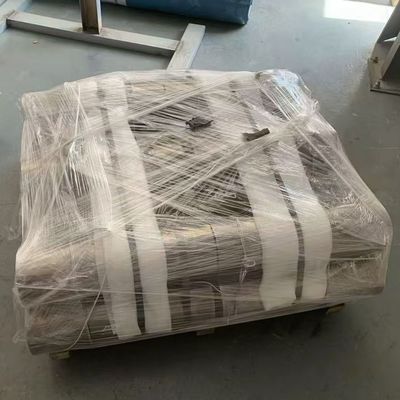-
 Raian IonescuΥλική ποιότητα πολύ υψηλή. πρέπει να συνεργαστούμε περισσότερο από 10 έτη. Ανταλλάσσουν τα είδη μερών υλικού χάλυβα. Όλο το υλικό ποιοτικό αγαθό. Αυτοί δασμός για όλη την υλική ποιότητα. Πλανίζουμε συνεχιζόμαστε συνεργαζόμαστε με τους στο μέλλον
Raian IonescuΥλική ποιότητα πολύ υψηλή. πρέπει να συνεργαστούμε περισσότερο από 10 έτη. Ανταλλάσσουν τα είδη μερών υλικού χάλυβα. Όλο το υλικό ποιοτικό αγαθό. Αυτοί δασμός για όλη την υλική ποιότητα. Πλανίζουμε συνεχιζόμαστε συνεργαζόμαστε με τους στο μέλλον
Hastelloy C276 Bright Solid Bar Oxidation Resistance Polished Surface for Aerospace and Petrochemical Uses
| Τόπος καταγωγής | ΚΙΝΑ |
|---|---|
| Μάρκα | DELTA |
| Πιστοποίηση | ISO |
| Αριθμό μοντέλου | Hastelloy C276 |
| Ποσότητα παραγγελίας min | 10 κιλά |
| Τιμή | 40 - 50 USD/Kg |
| Συσκευασία λεπτομέρειες | τυπική συσκευασία για εξαγωγή |
| Χρόνος παράδοσης | 5 - 12 ημέρες με βάση την ποσότητα |
| Όροι πληρωμής | L/C, T/T, Western Union |
| Δυνατότητα προσφοράς | 3 τόνοι την εβδομάδα |

Με ελάτε σε επαφή με δωρεάν δείγματα και δελτία.
Whatsapp:0086 18588475571
Wechat: 0086 18588475571
Skype: sales10@aixton.com
Εάν έχετε οποιαδήποτε ανησυχία, παρέχουμε τη 24ωρη σε απευθείας σύνδεση βοήθεια.
x| Προϊόντα | Φωτεινή ράβδος Hastelloy C276 | Βαθμός | Hastelloy C276 |
|---|---|---|---|
| Διάμετρος | 5 - 350mm | Μήκος | Προσαρμοσμένη κοπή οποιουδήποτε μήκους κατά παραγγελία |
| Πρότυπο | Astm en | Υπηρεσία | ΤΟΜΗ |
| Θύρα φόρτωσης | Λιμάνι της Σαγκάης | Επιφάνεια | Ευφυής |
Hastelloy C276 Bright Solid Bar Oxidation Resistance Polished Surface for Aerospace and Petrochemical Uses
More Specification Informations
| Products Name | Hastelloy C276 Bright Bar |
| Diameter | 5 - 350mm |
| Length | custom cutting any length as request |
| Surface | bright, Black |
| Brand | DELTA |
| Service | cutting, Polishing |
| MOQ | 2 Kgs |
| Other Type | bar, strip,coil,pipe.sheet, plate,wire.etc |
| Packing | Wooden box |
| Loading Port | Shanghai Port |
| Price term | EXW,FOB,CIF,CFR |
| Deliver time | within 12 days |
- Nickel (Ni): Nickel is the base element of Hastelloy C276, present in the largest proportion (the balance of the alloy composition). It provides the alloy with excellent basic corrosion resistance and mechanical properties. Nickel also contributes to the alloy's stability at high temperatures, ensuring that the alloy maintains its integrity and performance in high - temperature aerospace and petrochemical environments.
- Chromium (Cr): With a content ranging from 14.5% - 16.5%, chromium is a key element for enhancing corrosion resistance, especially in oxidizing environments. It forms a stable, adherent chromium - oxide film on the surface of the alloy, which acts as a protective barrier against further oxidation and corrosion. In the aerospace industry, this protection is crucial for components exposed to the oxidizing effects of high - altitude air during flight. In petrochemical applications, it helps the alloy resist the oxidation caused by various chemicals.
- Molybdenum (Mo): Molybdenum, with a content of 15.0% - 17.0%, significantly improves the alloy's corrosion resistance in reducing environments. It enhances the alloy's resistance to strong acids such as sulfuric acid and hydrochloric acid, which are commonly encountered in petrochemical processes. Molybdenum also contributes to the alloy's high - temperature strength and helps to prevent pitting and crevice corrosion, making it suitable for use in aggressive chemical environments in both industries.
- Iron (Fe): Present in the range of 4.0% - 7.0%, iron is added to Hastelloy C276 mainly to reduce costs while still maintaining the alloy's excellent corrosion - resistant properties. Although it is a minor component compared to nickel, chromium, and molybdenum, it plays a role in the overall structure and properties of the alloy, ensuring that the alloy can meet the requirements of different applications in aerospace and petrochemical industries without sacrificing too much in terms of performance.
- Tungsten (W): Tungsten, with a content of 3.0% - 4.5%, further enhances the alloy's corrosion resistance, especially in environments containing chloride ions. It also contributes to increasing the alloy's strength and hardness, which is beneficial for components in aerospace that need to withstand high - stress conditions during flight, and in petrochemical plants where equipment may be subject to mechanical stress from flowing fluids and pressure differentials.
- ASTM B574: This standard is specifically for nickel - and cobalt - based alloy seamless pipe, fittings, and flanges. It sets strict requirements for the chemical composition limits of Hastelloy C276. For example, it precisely defines the allowable ranges of elements such as nickel, chromium, molybdenum, etc., as shown in the chemical composition table above. This ensures that the alloy's corrosion - resistant and mechanical properties are maintained. In terms of mechanical properties, it also specifies the minimum requirements for tensile strength, yield strength, and elongation, which are essential for ensuring the bar's performance in aerospace and petrochemical applications. For instance, in petrochemical pipelines, the pipe fittings made from Hastelloy C276 need to meet these mechanical property requirements to withstand the internal pressure and corrosive media.
- ASTM B564: This standard pertains to forged or rolled nickel - and cobalt - based alloy bars and shapes. It controls the quality of the forging and rolling processes, ensuring that the Hastelloy C276 bright solid bar has a proper microstructure. A uniform microstructure is vital for consistent mechanical properties throughout the bar. In aerospace component manufacturing, components forged from the bar need to have a reliable microstructure to endure the high - stress and high - temperature conditions during flight.
- United States (UNS): In the United States, Hastelloy C276 is designated as UNS N10276. The Unified Numbering System (UNS) is widely used in the American materials industry to identify metals and alloys. UNS N10276 has the exact same chemical composition and meets the same strict standards as Hastelloy C276 in terms of mechanical properties and corrosion resistance. This ensures that American aerospace and petrochemical manufacturers can use the alloy with confidence, knowing that it will perform as expected in their applications. For example, in American aerospace engine manufacturing, components made from UNS N10276 are subject to the same rigorous quality control and performance requirements as those made from Hastelloy C276 in other parts of the world.
- Germany (W.Nr.): In Germany, the equivalent grade is W.Nr.2.4617 (also sometimes referred to as NiMo16Cr15W). The German W.Nr. (Werkstoffnummer) system is used to classify materials. W.Nr.2.4617 has the same high - nickel, chromium, and molybdenum content as Hastelloy C276, providing German companies in the aerospace and petrochemical sectors with a reliable material option. German petrochemical plants often use pipes and fittings made from W.Nr.2.4617 to handle corrosive chemicals, and the alloy's performance has been well - proven in these applications.
- France: In France, the alloy may be known as NC17D. This French designation is also equivalent to Hastelloy C276. French aerospace and petrochemical industries rely on the consistent properties of NC17D, which is interchangeable with Hastelloy C276 in terms of its ability to resist corrosion and maintain mechanical integrity in demanding environments. For instance, in French aerospace component manufacturing, NC17D can be used to produce parts that need to withstand high - temperature and high - stress conditions during flight.
- Enhanced Corrosion Resistance: A polished surface significantly contributes to the already excellent corrosion - resistance properties of Hastelloy C276. The smooth surface reduces the sites where corrosive substances can accumulate and initiate corrosion. For example, in petrochemical plants where the bar may be exposed to corrosive chemicals, a polished surface minimizes the chances of pitting corrosion. Pitting occurs when small pits or holes form on the surface of the metal due to localized corrosion. With a polished surface, there are fewer irregularities for corrosive ions, such as chloride ions in seawater or acidic solutions, to get trapped and start the corrosion process. In aerospace, components made of polished Hastelloy C276 are better protected against the corrosive effects of high - altitude air and any contaminants in the flight environment.
- Improved Aesthetic Appeal: In some applications, especially where the Hastelloy C276 components are visible, the polished surface provides an attractive and professional appearance. For example, in certain high - end petrochemical equipment that may be on display in plant visitor areas or in some aerospace interior components, the shiny, polished surface gives a sense of quality and precision. It also helps in easy identification and inspection of the components, as any surface defects are more easily visible on a polished surface.
- Reduced Impurity Adhesion: A polished surface has less tendency to attract and hold impurities. In both aerospace and petrochemical applications, this is important. In petrochemical pipelines, a polished inner surface of the Hastelloy C276 pipe reduces the adhesion of solid particles or residues from the flowing chemicals. This helps to maintain the flow rate and prevents clogging of the pipelines. In aerospace, on components such as engine parts, a polished surface reduces the accumulation of dust, dirt, or other airborne particles during flight, which could potentially affect the performance or cause premature wear of the components.
- Turbine Engine Components: In aerospace, turbine engines operate under extremely harsh conditions. Hastelloy C276 bright solid bar is often used to manufacture components such as turbine blades and discs. The high - temperature strength of the alloy ensures that these components can withstand the high - rotational speeds and high - temperature gas flows within the engine. For example, during flight, the turbine blades are exposed to combustion gases with temperatures reaching up to 1000°C or more. The oxidation - resistance property of Hastelloy C276 protects the blades from being rapidly oxidized in this high - temperature and oxygen - rich environment, maintaining their structural integrity and aerodynamic performance. The high tensile and yield strengths allow the blades to endure the centrifugal forces generated by high - speed rotation without deformation or failure.
- Combustion Chamber Liners: Combustion chambers in aircraft engines are subject to intense heat and corrosive combustion products. Hastelloy C276's polished surface not only reduces the adhesion of combustion residues but also provides enhanced corrosion resistance. The alloy's ability to resist oxidation and corrosion in the presence of hot gases containing oxygen, sulfur, and other elements ensures the long - term reliability of the combustion chamber liners. This is crucial for maintaining the efficient combustion process within the engine, as any degradation of the liner could lead to uneven combustion, reduced engine performance, and potentially safety issues.
- Exhaust Systems: The exhaust systems of aerospace vehicles experience high - temperature exhaust gases and thermal cycling during take - off, flight, and landing. Hastelloy C276 is used in the construction of exhaust ducts and nozzles. Its high - temperature strength allows it to maintain its shape and structural integrity during thermal expansion and contraction. The oxidation - resistance property protects the exhaust system components from the oxidizing effects of the hot exhaust gases, which often contain oxygen and other reactive substances. This helps to extend the service life of the exhaust system and reduces the need for frequent maintenance and replacement, contributing to the overall cost - effectiveness and reliability of the aircraft.
- Pipelines: In petrochemical plants, pipelines are used to transport various corrosive fluids, including crude oil, refined products, and chemical reagents. Hastelloy C276 bright solid bar is used to manufacture pipelines due to its excellent corrosion - resistance properties. For instance, when transporting sulfur - containing crude oil, the high molybdenum content in Hastelloy C276 provides resistance to the corrosive effects of sulfuric acid, which can be formed during the refining process. The polished inner surface of the pipeline reduces the friction coefficient, allowing for smooth fluid flow and minimizing pressure drops. This improves the efficiency of the transportation process and reduces energy consumption.
- Valves: Valves in petrochemical plants control the flow of fluids and are often exposed to highly corrosive media. Hastelloy C276 is used to make valve bodies, stems, and seats. The high - strength and corrosion - resistant properties of the alloy ensure that the valves can operate smoothly and accurately in aggressive chemical environments. For example, in a plant that produces hydrochloric acid, the valves made of Hastelloy C276 can withstand the strong corrosive action of hydrochloric acid without significant wear or corrosion, ensuring the normal operation of the production process and preventing leakage of hazardous chemicals.
- Reactors: Chemical reactors in the petrochemical industry are where various chemical reactions take place under high - temperature and high - pressure conditions. Hastelloy C276 is used to construct reactor vessels and internal components. The alloy's oxidation - resistance and high - temperature strength enable the reactor to maintain its structural integrity during chemical reactions that may involve the presence of oxidizing agents and high temperatures. For example, in a polymerization reactor where monomers are converted into polymers under high - temperature and high - pressure conditions, Hastelloy C276 can resist the corrosive effects of the reaction medium and the high - temperature environment, ensuring the safe and efficient operation of the reactor and the quality of the polymer products.
![]()
![]()
![]()
![]()



